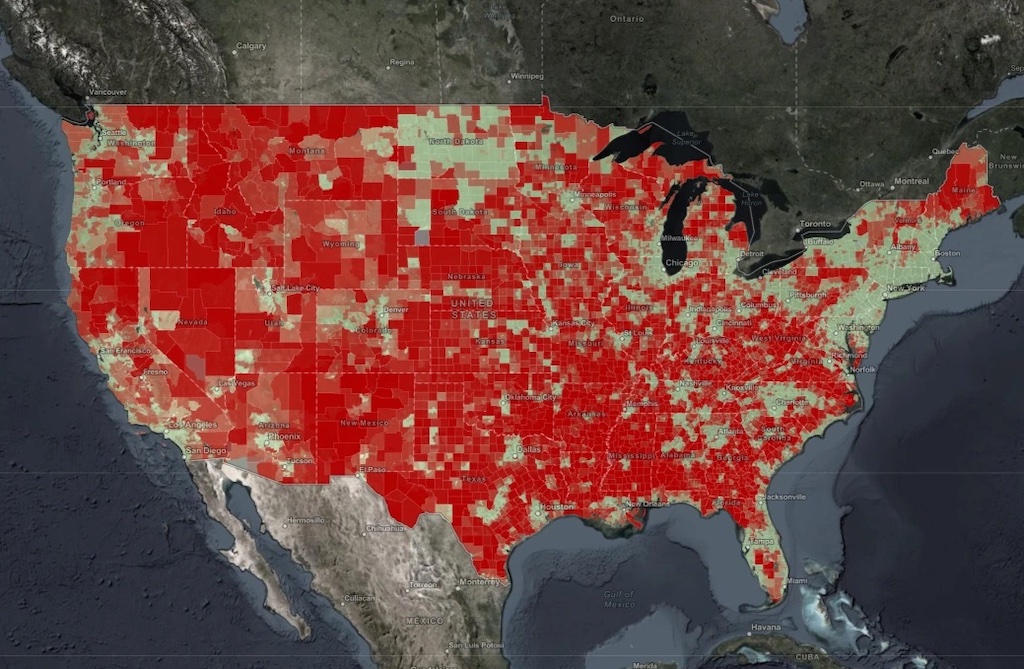Community Crowdsourcing Efforts Essential to Accessing Federal Broadband Funding
In the absence of reliable federal broadband mapping data, communities are taking matters into their own hands.

KEYSTONE, Colorado, May 27, 2022 –Two data experts speaking at the Mountain Connect conference here on Wednesday said it was vital for the Federal Communications Commission to maintain transparency about its methods as it produces an updated broadband map.
The release of $42.5 billion in federal broadband funding through the U.S. Commerce Department’s National Telecommunications and Information Administration is contingent upon new broadband maps being produced by the Federal Communications Commission.
Agency Chairwoman Jessica Rosenworcel has committed to delivering such maps by the fall. During a House Energy and Commerce Committee Oversight hearing on March 31, when asked about progress, she said: “Absolutely, yes. We will have [complete] maps in the fall.”
Completed Maps Will ‘Absolutely’ Be Available This Fall, FCC’s Rosenworcel Says
Still, many are skeptical.
In particular, states and localities are involved in data collection, too – if only to have data to challenge FCC maps. Lai Yi Ohlsen, director of Measurement Lab, and Dustin Loup, program manager of the National Broadband Mapping Coalition for the Marconi Society, said that detailing methodologies will be important to the challenge process.
Loup recommended that communities announce speed tests and include a survey in order to get a sense of where the participant is located, what plan they are paying for and encourage participants to take the test multiple times to see how Internet speeds fluctuate at different hours of the day.
Ohlsen and Loup also said that communities should provide speed tests in different languages and partner with community anchor institutions, local media, and radio stations for publicity.
Questions about the new federal map
The new broadband “fabric” under construction by the FCC aims to address granularity issues of previous maps by enabling address-by-address data. But as to the legitimacy of the new FCC maps, the duo said that the maps will still paint an inaccurate picture of where broadband is and is not accessible across the country.
This is because the data used to create the new maps, they said, will be based upon industry-advertised broadband speeds and not actual user-experienced speeds.
This is particularly worrisome because funds under the NTIA’s Broadband Equity, Access, and Deployment program will be awarded to each state and territory will be primarily based on the number of locations considered to be unserved with broadband, as defined by 25 Megabits per second (Mbps) down by 3 Mbps up. This is why cities, counties, and states are currently creating strategies to crowdsource residents in order to develop their own broadband maps in the event that the FCC misrepresents internet access options available to their residents.
Challenge process
Although the NTIA is required by the Infrastructure Investment and Jobs Act to use the FCC’s new mapping fabric, they will also be subject to new scrutiny.
In particular, local governments, nonprofit organizations and broadband service providers can produce their own data to challenge the eligibility of a locality for grant funding.
The challenge process will begin once the FCC’s new maps are made public. Any government entity or nonprofit with conflicting evidence will be able to file their findings through an FCC platform, said Ohlsen and Loup.
Providers will be automatically notified of the challenge and have 60 days to respond to the challenger, in order to try and resolve the inconsistencies. If the entities fail to resolve differences in the conflicting data, the FCC will be responsible for making the final decision.
Broadband Breakfast on June 29, 2022 — Broadband Mapping and Data

Our Broadband Breakfast Live Online events take place on Wednesday at 12 Noon ET. Watch the event on Broadband Breakfast, or REGISTER HERE to join the conversation.

Wednesday, June 29, 2022, 12 Noon ET –Broadband Mapping and Data
Now that the National Telecommunications and Information Administration’s Notice of Funding Opportunity has been released, attention turns to a core activity that must take place before broadband infrastructure funds are distributed: The Federal Communications Commission’s updated broadband maps. Under the Infrastructure Investment and Jobs Act, as implemented by the NTIA’s Broadband Equity, Access and Deployment program, these address-level maps from the FCC will determine the allocation of funds among states and serve as a key source of truth. Our panelists will also consider the role of state-level maps, the NTIA challenge process and other topics. Join Broadband Breakfast as we return to one of the subjects that we know best: Broadband data and mapping.
Panelist resources:
- Broadband Breakfast on April 20, 2022 — Broadband Mapping and Data: In-Home Connections
- Broadband Breakfast on February 2, 2022 — Groundhog Day Special on Broadband Mapping
- Broadband Breakfast on December 22, 2021 — When Will the Broadband Maps Get Fixed?








